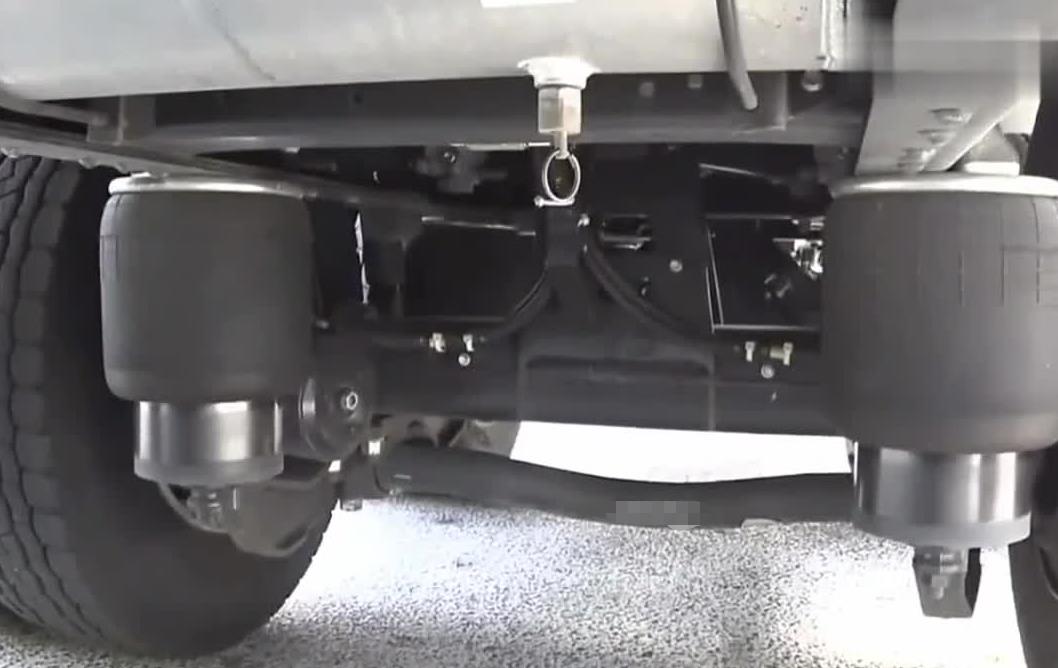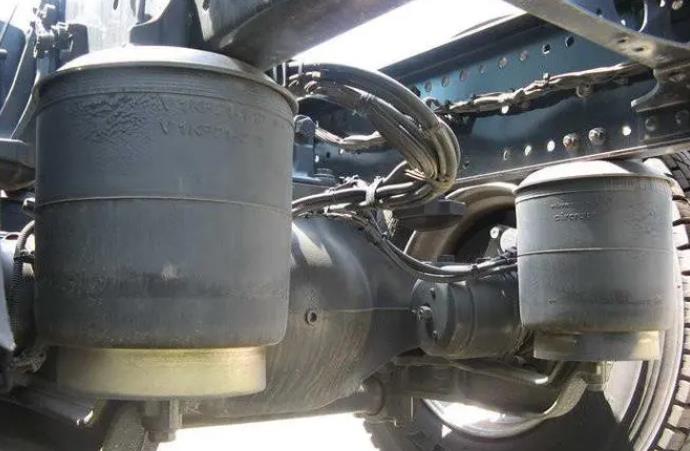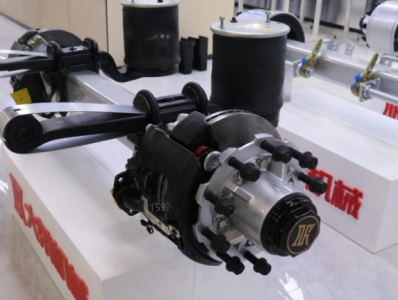More than steel suspension, air suspension is good where?
The vehicle suspension system is an important part used to connect the frame and the axle, which is generally composed of shock absorbers, elastic components, guiding mechanism and so on. When the vehicle is driving, the ground and the vehicle produce a corresponding force, if this force is directly transmitted to the frame, then it will feel very bumpy. Filtering through the vehicle's suspension, which connects the axle to the frame, reduces most of the forces and improves comfort.

leaf spring suspension and air suspension are usually used in trucks, and the most common truck suspension we see daily is usually Leaf spring suspension, because leaf spring suspension is simple in structure, low in cost and reliable in work. In recent years, with the progress of science and technology and the formulation of regulations, air suspension has become more and more common in trucks, which has the characteristics of light weight and better comfort. So what are the advantages and disadvantages of these two types of suspension?
The air suspension is comfortable and smooth but expensive
In the new GB7258 regulations officially implemented on January 1, 2018, it is mentioned that: "The rear axle of dangerous goods transport vehicles with a total mass greater than or equal to 12000kg, all dangerous goods transport semi-trailers, as well as three-axis fence plate and warehouse grid semi-trailers should be equipped with air suspension." This regulation will make air suspension more and more common, thanks to the characteristics of air suspension, compared with traditional steel suspension, air suspension is indeed more suitable for pulling dangerous goods or other high value-added cargo.
The air suspension controls the charging and discharging of compressed air in the air bag through the control system, so as to adjust the load capacity and height of the vehicle. Cars equipped with air suspension are generally equipped with a controller under the driving position. Compared with the traditional leaf spring suspension, the air suspension can keep the chassis height unchanged when driving, the natural frequency is almost unchanged, and the center of gravity of the vehicle is almost unchanged.
Therefore, it has good comfort and safety, can effectively protect the goods, reduce the loss rate of the goods in transit, and also reduce the impact of the vehicle on the road. Air bags can be adjusted by the controller height, improve loading and unloading efficiency, reduce fuel consumption, reduce tire wear and so on. At the same time, the air suspension also has the characteristics of occupying less space and lighter weight.
The tractor equipped with air suspension can be quickly unhooked and connected by adjusting the height of the air bag, which improves the efficiency of transportation. In addition, the air suspension can adjust the height of the chassis more conveniently when the vehicle is docked to the loading and unloading platform, so as to realize the rapid loading and unloading of goods.
However, the disadvantages are also there, compared with the traditional leaf spring suspension, the air suspension cost is higher, and the later maintenance cost is also much higher. Another point is not overload.

Air suspension is bound to become the development trend of the industry in the future, and the current regulations have clarified that some models must be used, and it can be seen that air suspension is recognized in the industry. As early as the early 1950s, Europe and the United States have used air suspension on buses and trucks, and the use of air suspension on heavy trucks has exceeded 90% in the late 1990s.
Leaf spring suspension is not only used in trucks, because it has very good load bearing and reliability, some hard off-road vehicles, vans, buses and so on are also used. It is the earliest type of suspension used, as early as 1886, the world's first car was also used on the leaf spring suspension.
Leaf spring suspension is simple in structure, low in cost, reliable and durable, and has quite good bearing performance. However, the disadvantage is that the weight and layout space are too large, and the weight of dozens of steel plates is undoubtedly an obstacle to lightweight. At the same time, the comfort is also lacking, the rigidity is too large, and the noise is also large.
In the 18th century, the French invented a flat single piece of steel spring suspension system used in horse-drawn carriage, in 1763, the American Treadwell obtained the first patent for coil spring suspension, in 1804, the British Aubadiya Elliott invented leaf spring suspension, and in 1878, the French Le Mans great Amidybori invented the device using blade spring to do independent suspension of the front wheel; The development of the suspension system has been ever-changing, and there are always new things to replace the old things.
Leaf spring suspension currently accounts for the mainstream of China's truck market, although air suspension has been supported in regulations, but a thing to completely replace something or it has to see the changes it brings.







